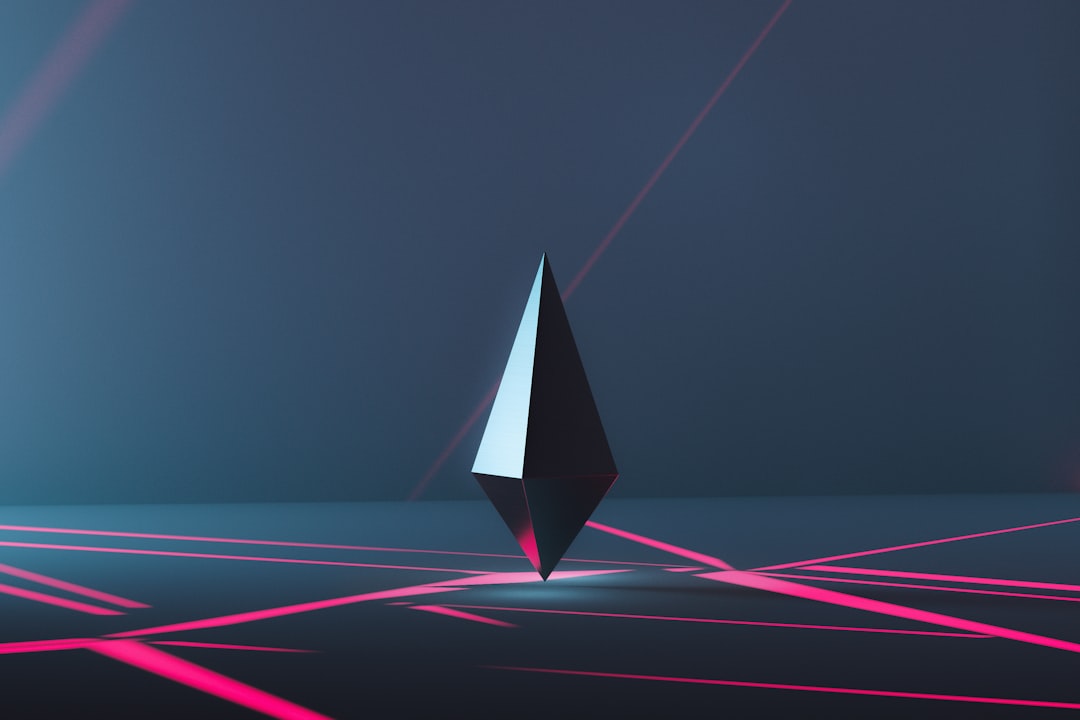If you’ve been on the internet in the past few months, you’ve probably heard the buzz about NFTs. But what exactly are they? NFTs, or non-fungible tokens, are unique digital assets that are stored on a blockchain. They can represent anything from digital artwork to tweets to virtual real estate.
So why are NFTs so popular? There are a few reasons. First, they allow for the ownership and proof of ownership of digital assets, which has been a problem in the past. Second, NFTs have the potential to revolutionize the way that artists and creators make money from their work. And third, the market for NFTs is expanding rapidly, with new uses and applications being discovered all the time.
It’s clear that NFTs are more than just a passing trend. They have the potential to change the way we think about digital ownership and the digital economy. But let’s dive deeper into these benefits and explore what makes NFTs so unique.
Unique Digital Ownership
Do you remember the days when you would buy a physical copy of your favorite album or a rare comic book, and feel a sense of ownership and pride? Well, with the growth of technology, our ownership of unique physical items has shifted to the digital realm. This is where NFTs come in – these non-fungible tokens are unique digital assets that allow us to prove ownership and uniqueness of digital items.
NFTs are built on blockchain technology, which ensures the authenticity and uniqueness of each item. This means that when you purchase an NFT, you are buying a one-of-a-kind digital asset that cannot be replicated or duplicated. This is a huge advantage for artists, creators, and collectors alike.
As an artist or creator, NFTs provide an opportunity for direct sales and royalties. With traditional methods of selling digital art, it can be difficult to prove ownership or track sales. However, with NFTs, artists can create a unique digital asset that cannot be copied, and sell it directly to collectors. This provides a more transparent and secure method of selling digital art, and allows artists to receive a fair share of the profits.
For collectors, NFTs provide a way to own and display unique digital assets. With the rise of digital art, NFTs have become a popular way to collect and showcase digital artwork. NFTs can also be used to represent other digital assets such as video game items, virtual real estate, and even tweets.
In summary, NFTs provide a unique opportunity for digital ownership, allowing us to prove ownership and uniqueness of digital assets. They also provide economic benefits for artists and creators, and offer a new avenue for collectors to showcase and own unique digital assets. With the potential for NFTs in sports and gaming, as well as the rise of digital art, the market for NFTs is only set to grow.
Well, with the growth of technology, our ownership of unique physical items has shifted to the digital realm.
Economic Benefits of NFTs
NFTs not only provide unique digital ownership but also present an opportunity for artists and creators to earn consistent revenue. In traditional art sales, artists receive a one-time payment for their work and do not receive any further compensation for secondary sales. However, with NFTs, creators can receive a percentage of the sale price each time their work is resold. This is possible because NFTs are programmed with smart contracts that allow for automatic payments to be made to the creator each time the NFT is sold.
Additionally, NFTs enable direct sales from the creator to the buyer, cutting out middlemen such as auction houses and galleries. This allows creators to receive a higher percentage of the sale price and have more control over the distribution of their work.
Furthermore, NFTs provide a way for creators to monetize digital assets that were previously difficult to sell. For example, a musician can create an NFT for a limited edition album or a behind-the-scenes look at the recording process. A professional gamer can create NFTs for in-game items and sell them to other players. The possibilities for monetizing digital assets through NFTs are endless.
The economic benefits of NFTs extend beyond just the creators. Investors and collectors can also benefit from the potential appreciation of the value of NFTs over time. As the market for NFTs grows and more people become interested in owning unique digital assets, the value of certain NFTs may increase.
Overall, NFTs provide a promising avenue for artists and creators to earn consistent revenue and monetize previously difficult-to-sell digital assets. The potential economic benefits for both creators and investors make NFTs an exciting development in the world of collectibles.
The economic benefits of NFTs extend beyond just the creators.
Expanding Market: The Growing Popularity of NFTs in Digital Art, Sports, and Gaming
The market for NFTs is rapidly expanding, driven by the increasing demand for unique digital assets in various industries. Digital art, sports, and gaming are just a few examples of areas where NFTs are gaining traction.
Digital art has seen a surge in popularity in recent years, and NFTs have provided artists with a new way to monetize their work. By owning an NFT, collectors can prove ownership and receive royalties each time the artwork is resold. This direct connection between the artist and the collector removes the need for intermediaries, allowing artists to retain more control over their work.
Sports and gaming are also exploring the potential of NFTs. In the sports industry, NFTs can be used to prove ownership of memorabilia, such as game-worn jerseys and autographed items. NFTs can also be used to create unique collectibles for fans, such as digital trading cards or in-game items.
In the gaming industry, NFTs are already being used to create unique in-game items that can be traded and sold. This allows gamers to truly own their virtual possessions, creating a new level of engagement and investment in the game.
As the market for NFTs continues to expand, it will be exciting to see how they will be used in other industries. The potential for NFTs in music, film, and even real estate is already being explored, and the possibilities are endless.
However, with any new technology, there are concerns about its impact. One of the biggest concerns is the environmental impact of NFTs. The energy needed to create and maintain the blockchain technology used for NFTs is significant, and there are concerns about the carbon emissions associated with this process. It is important for the industry to address these concerns and find solutions for reducing the environmental impact of NFTs.
Overall, the expanding market for NFTs is a testament to the growing demand for unique digital assets. NFTs provide a new way for creators and collectors to connect, and their potential in various industries is just beginning to be explored. As the industry evolves, it will be exciting to see how NFTs will continue to change the way we think about ownership and collectibles.
This direct connection between the artist and the collector removes the need for intermediaries, allowing artists to retain more control over their work.
Environmental Impact of NFTs: Addressing Concerns and Finding Solutions
As with any new technology or trend, there are bound to be concerns and criticisms. One of the most pressing concerns regarding NFTs is their potential environmental impact.
NFTs are built on blockchain technology, which requires a massive amount of energy to function. The process of creating and maintaining a blockchain involves solving complex algorithms and mathematical equations that require a lot of computing power. This computing power translates into a significant amount of electricity consumption, which can have a negative impact on the environment.
The environmental impact of NFTs has been a topic of much debate among tech experts and environmentalists. Some have raised concerns about the amount of energy used in the creation and sale of NFTs, citing the potential harm to the environment.
However, it’s important to note that the environmental impact of NFTs is not a black and white issue. While it’s true that blockchain technology requires a lot of energy, there are also ways to mitigate this impact.
One potential solution is to use renewable energy sources to power blockchain technology. Many companies and organizations are already taking steps in this direction, using solar and wind energy to power their servers and reduce their carbon footprint.
Another solution is to increase the efficiency of blockchain technology. As the technology evolves, it’s likely that we will find ways to make it more energy-efficient, reducing the amount of energy needed to create and maintain NFTs.
At the end of the day, it’s important to weigh the benefits of NFTs against their potential environmental impact. While there are certainly concerns to be addressed, it’s also important to recognize the potential economic and cultural benefits of NFTs, especially for artists and creators.
By finding solutions to the environmental impact of NFTs, we can ensure that this exciting new trend can continue to grow and evolve while also minimizing its impact on the planet.
However, it’s important to note that the environmental impact of NFTs is not a black and white issue.
Accessibility: Making NFTs More Accessible to a Wider Audience
While NFTs have opened up new possibilities for artists, creators, and collectors, concerns have been raised about the accessibility of this new technology. Some argue that the high cost of creating and buying NFTs puts them out of reach for many people, while others point to the technical barriers that may prevent some from participating in this new market.
But as with any new technology, there are solutions and opportunities to make NFTs more accessible to a wider audience. One way to do this is through education and outreach. By providing resources and information about NFTs, we can help more people understand the value and potential of this technology, and how it can benefit them.
Another solution is to make the process of creating, buying, and selling NFTs easier and more affordable. This includes exploring new payment options, such as cryptocurrency, that can make transactions more secure and efficient. It also means creating tools and platforms that simplify the process of minting and selling NFTs, so that more people can participate in this new market.
At the same time, we need to be mindful of the environmental impact of NFTs, and work to reduce carbon emissions associated with this technology. By exploring more sustainable options for creating and storing NFTs, we can ensure that this new market is both accessible and environmentally responsible.
Ultimately, the potential of NFTs is too great to be limited by concerns about accessibility. By working together to address these challenges, we can create a more inclusive and vibrant market for digital collectibles, one that benefits artists, creators, collectors, and enthusiasts of all kinds. So let’s embrace the opportunities of NFTs, and work to make them accessible to everyone.
Ultimately, the potential of NFTs is too great to be limited by concerns about accessibility.
Conclusion: The Future of Collectibles
As we wrap up this discussion on NFTs, it’s clear that this new technology has taken the world by storm. The benefits of owning an NFT, from unique digital ownership to economic benefits for creators, are hard to ignore.
But NFTs are more than just a trend; they represent the future of collectibles. With the rise of digital art and the potential for NFTs in sports and gaming, the market for NFTs is expanding rapidly.
As with any new technology, there are concerns about the environmental impact and accessibility of NFTs. However, as we have seen, solutions are already being developed to address these concerns.
The potential of NFTs is truly inspiring. They allow for the creation of unique digital assets that can be owned and traded just like physical collectibles. And as the market for NFTs continues to grow, the possibilities for their use are endless.
So whether you’re an artist, a collector, or just someone interested in the future of technology, NFTs are worth keeping an eye on. Who knows what the next big thing in NFTs will be? The possibilities are endless, and the future is bright.





